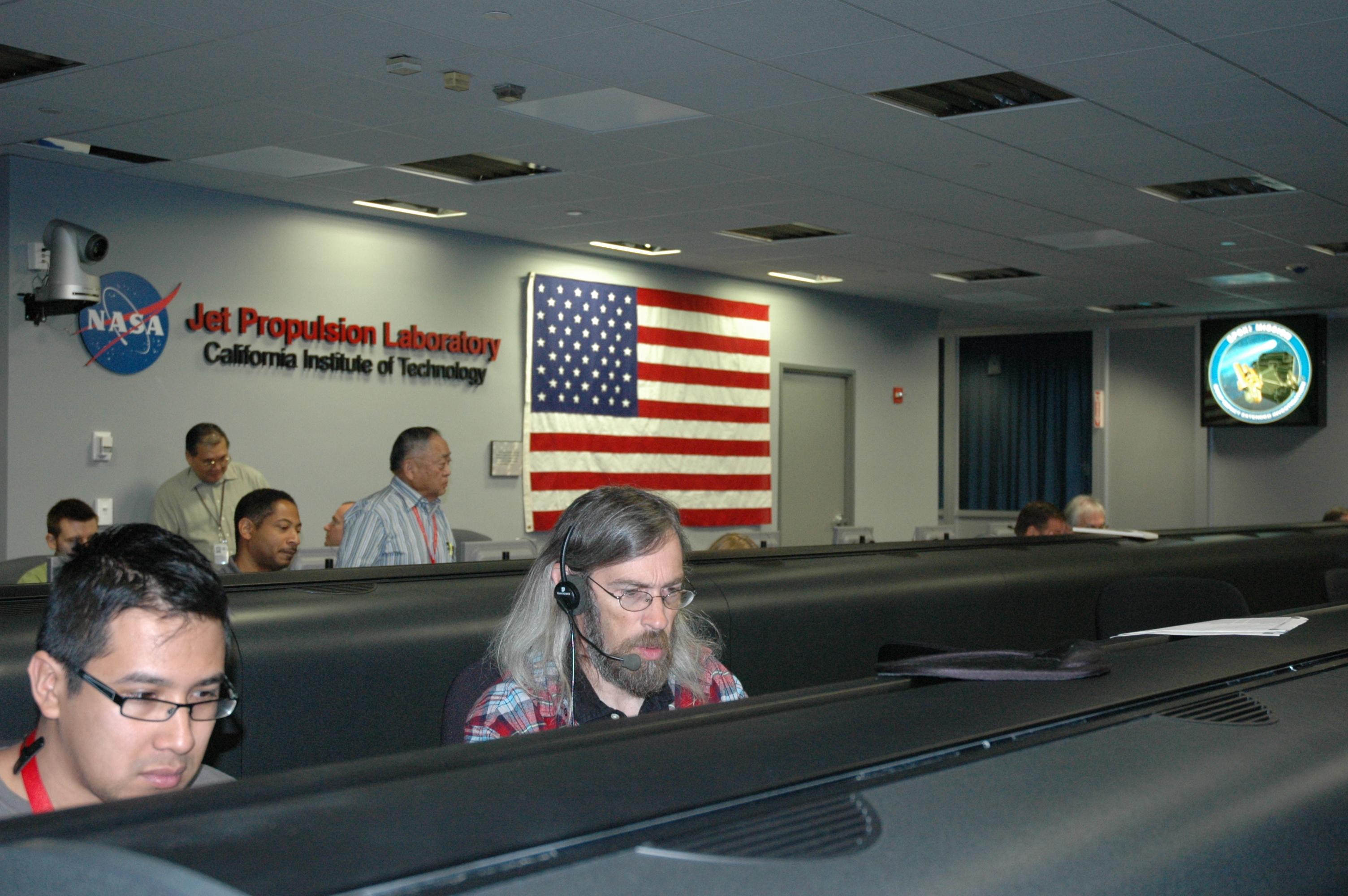EPOXI
Two intriguing investigations -- One flight-proven spacecraft
News: NASA Spacecraft Preps for Comet Flyby, 2010.10.27
Press Release
NASA Spacecraft Preps for Comet Flyby2010.10.27
 Navigators and mission controllers for NASA's EPOXI mission communicated with the spacecraft for a trajectory correction maneuver on October 27, 2010.
Navigators and mission controllers for NASA's EPOXI mission communicated with the spacecraft for a trajectory correction maneuver on October 27, 2010.
Credit: NASA/JPL-Caltech
PASADENA, Calif. -- In one of its final mission trajectory correction maneuvers, the EPOXI mission spacecraft has refined its orbit, preparing it for the flyby of comet Hartley 2 on Nov. 4. The time of closest approach to the comet on that day is expected to be about 7:02 a.m. PDT (10:02 a.m. EDT).
Today's trajectory correction maneuver began at 11 a.m. PDT (2 p.m. EDT), when the spacecraft burned its engines for 60 seconds, changing its velocity by 1.59 meters per second (3.6 miles per hour).
On Nov. 4, the spacecraft will fly past Hartley 2 at a distance of about 700 kilometers (435 miles). It will be only the fifth time in history that a spacecraft has been close enough to image a comet's nucleus.
EPOXI is an extended mission that uses the already "in-flight" Deep Impact spacecraft to explore distinct celestial targets of opportunity. The name EPOXI itself is a combination of the names for the two extended mission components: the extrasolar planet observations, called Extrasolar Planet Observations and Characterization (EPOCh); and the flyby of comet Hartley 2, called the Deep Impact Extended Investigation (DIXI). The spacecraft will continue to be referred to as "Deep Impact."
NASA's Jet Propulsion Laboratory, Pasadena, Calif., manages the EPOXI mission for NASA's Science Mission Directorate, Washington. The University of Maryland, College Park, is home to the mission's principal investigator, Michael A'Hearn. Drake Deming of NASA's Goddard Space Flight Center, Greenbelt, Md., is the science lead for the mission's extrasolar planet observations. The spacecraft was built for NASA by Ball Aerospace & Technologies Corp., Boulder, Colo.
For more information about EPOXI visit epoxi.astro.umd.edu/ .
Priscilla Vega/DC Agle
Jet Propulsion Laboratory, Pasadena, Calif
818-354-1357/818-393-9011
Priscilla.r.vega [at] jpl [dot] nasa [dot] gov
agle [at] jpl [dot] nasa [dot] gov
RELEASE: 2010-353, Source
